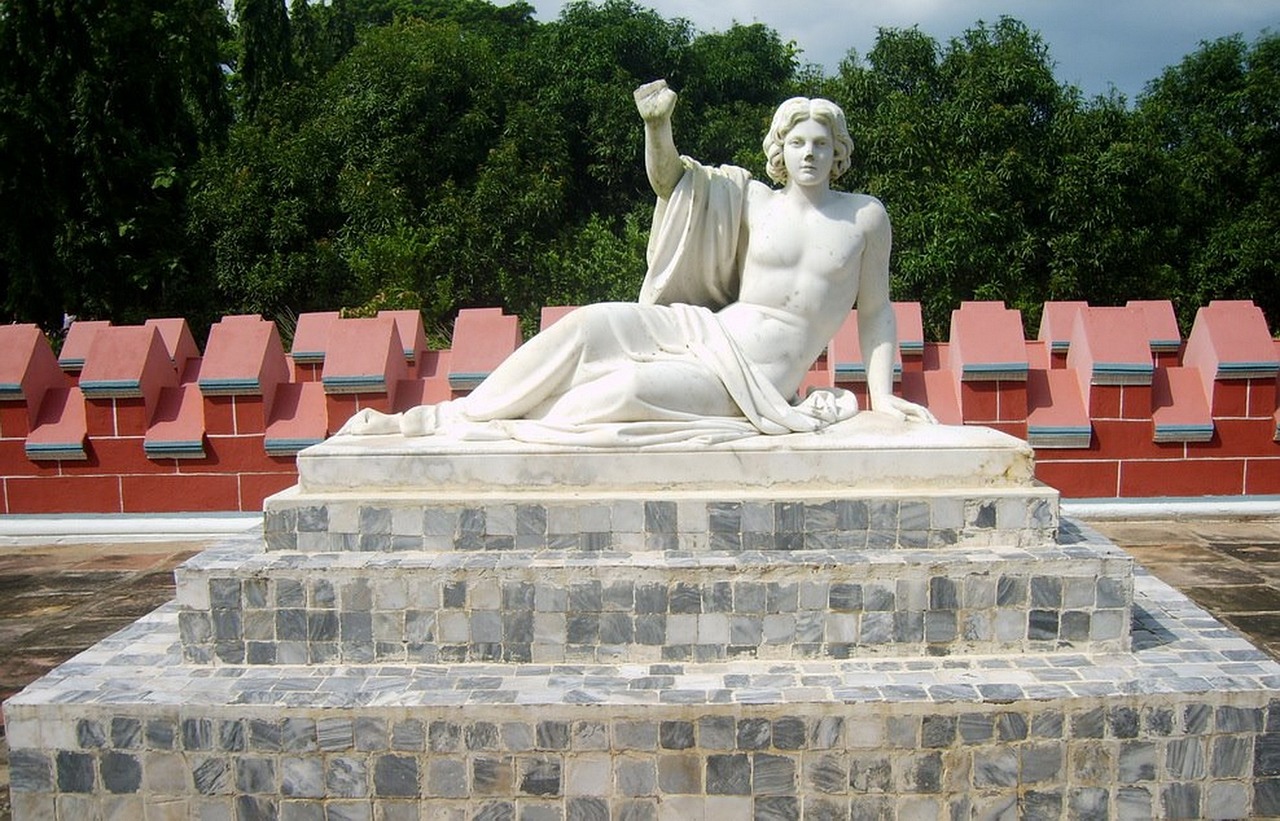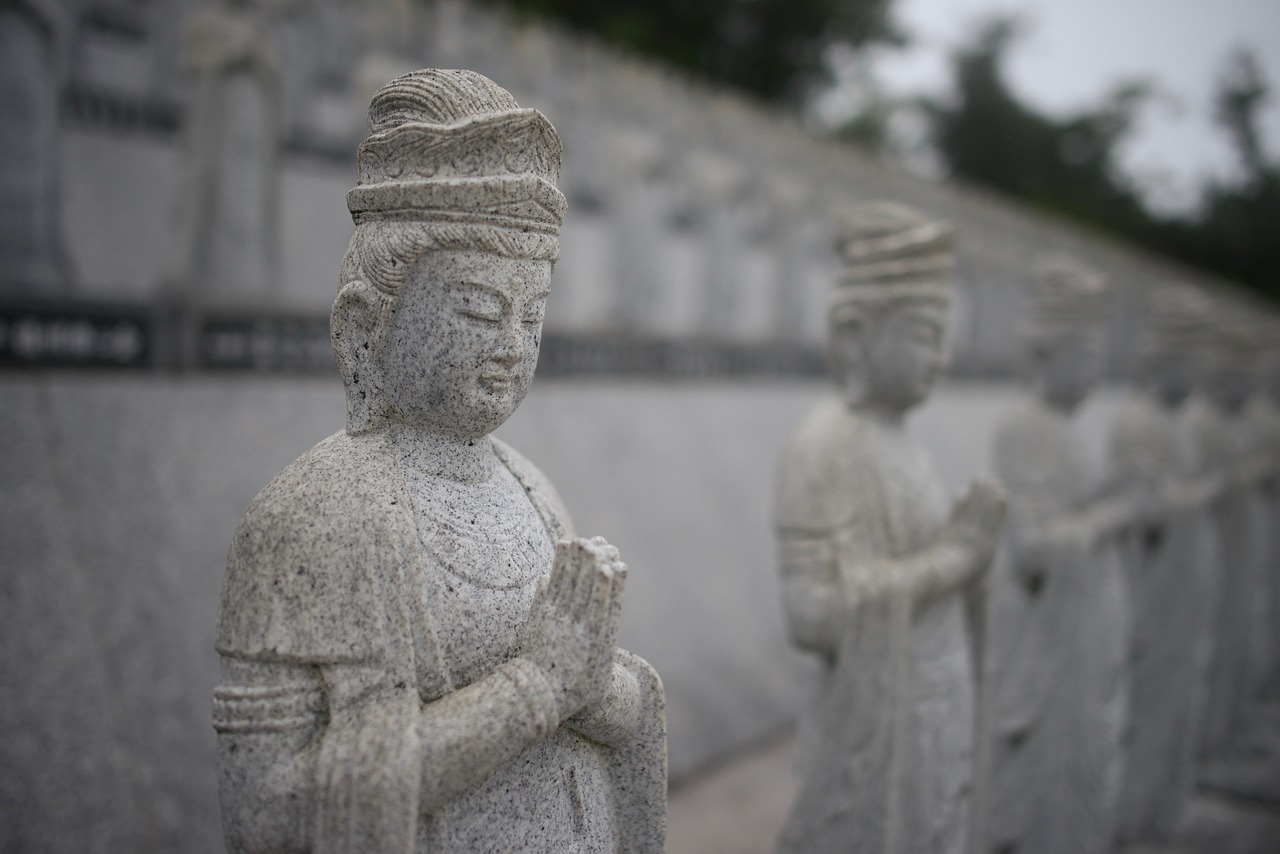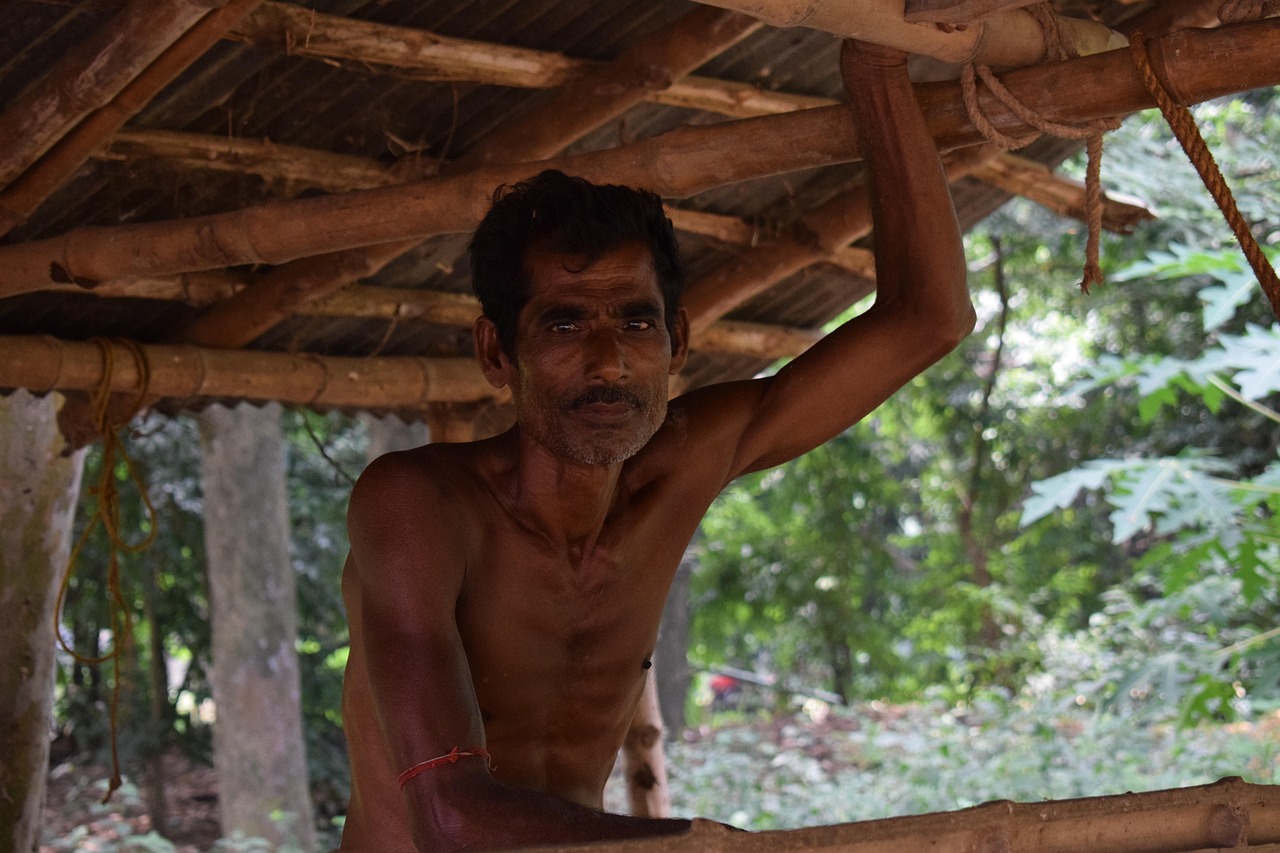This article delves into immersive ways to engage with the rich and diverse culture of West Bengal, offering insights into local traditions, cuisine, festivals, and much more. By exploring the heart of this region, you can truly connect with its vibrant heritage.
Understanding West Bengal’s Cultural Heritage
West Bengal is a melting pot of cultures, shaped by centuries of history, art, and traditions. Its unique identity is influenced by various factors, including its colonial past, religious diversity, and the artistic expressions of its people. This section delves into how these elements come together to create a rich cultural tapestry.
Exploring Traditional Bengali Cuisine
Bengali cuisine is celebrated for its distinct flavors and variety. The emphasis on fresh ingredients and traditional cooking methods makes it a culinary delight. Here, we highlight some must-try dishes and the cultural significance of food in the region.
- Signature Dishes to Savor: From shorshe ilish (hilsa fish in mustard sauce) to mishti doi (sweetened yogurt), Bengali cuisine offers an array of flavors that every visitor should experience.
- The Art of Bengali Sweets: Renowned for their sweetness, Bengali sweets like rasgulla and sandesh hold a special place in celebrations and everyday life.
- Street Food Delights: Street food is an integral part of Bengal’s culinary scene. Popular items include puchka (pani puri) and kathi rolls, found in bustling local markets.
Participating in Local Festivals
Festivals in West Bengal are a visual and auditory feast, filled with color and joy. Major celebrations, such as Durga Puja, showcase the region’s rich traditions and community spirit. This section covers how to fully immerse yourself in these festivities.
- Durga Puja: The Grand Celebration: This festival is the pinnacle of cultural expression in West Bengal, featuring elaborate decorations, rituals, and community gatherings.
- Other Notable Festivals: Beyond Durga Puja, festivals like Poila Baisakh (Bengali New Year) and Dol Jatra (Holi) offer unique cultural experiences.
Engaging with Local Arts and Crafts
West Bengal is home to a rich tradition of arts and crafts that reflect its cultural heritage. This section highlights traditional handicrafts and where to find authentic pieces.
- Traditional Handicrafts: From kantha embroidery to terracotta pottery, these crafts are not only beautiful but also tell stories of the region’s history.
- Art Galleries and Exhibitions: Local galleries showcase contemporary and traditional art, offering insights into the works of talented Bengali artists.
Connecting with the Local Community
Building connections with locals can significantly enhance your cultural experience. This section offers tips on how to engage with residents and understand their way of life.
- Community Events and Workshops: Participating in local events or workshops provides an excellent opportunity to learn and interact with the community.
- Volunteering Opportunities: Consider volunteering with local organizations to give back while immersing yourself in the culture.
Conclusion: Embracing the Essence of West Bengal
Experiencing West Bengal like a local means immersing yourself in its culture, cuisine, and community. By embracing these opportunities, you can create a memorable and enriching visit that resonates long after you leave.
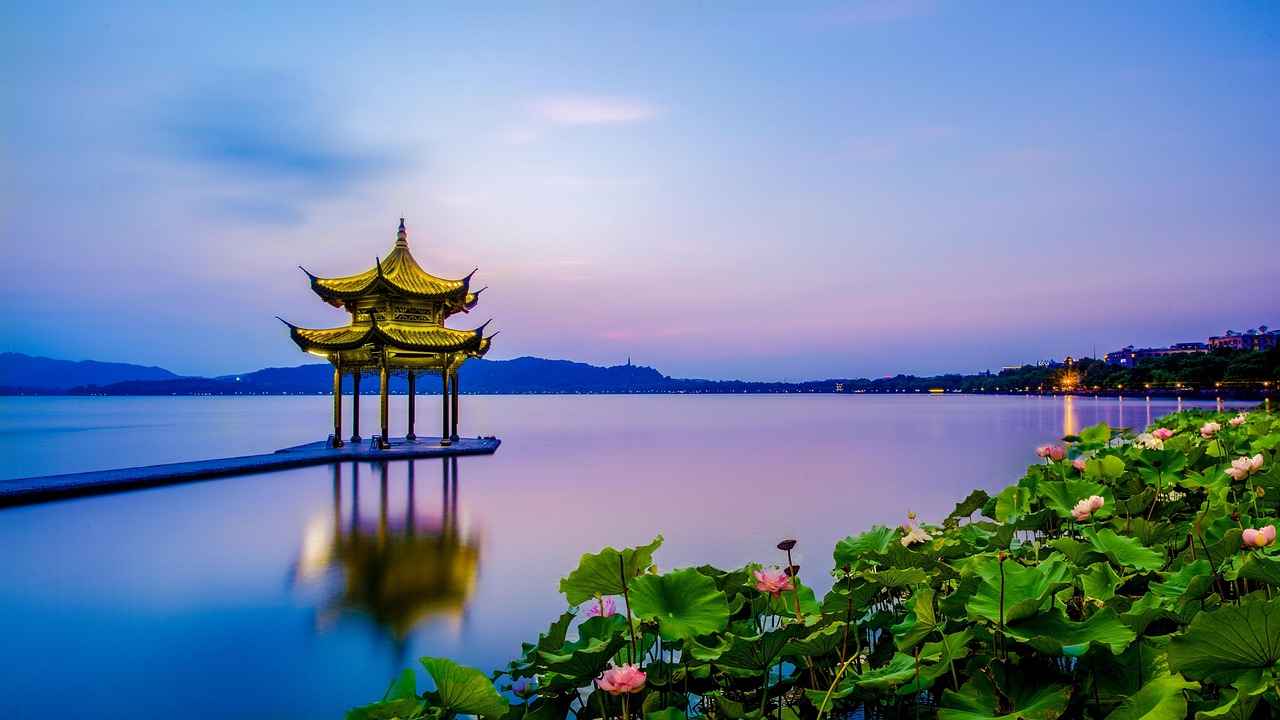
Understanding West Bengal’s Cultural Heritage
West Bengal, a state in eastern India, is a vibrant tapestry of culture, history, and tradition. This rich cultural heritage is woven from various influences, including religion, art, and the daily lives of its people. Understanding this heritage is essential for anyone looking to appreciate the true essence of West Bengal.
The state’s history is marked by significant events and movements that have shaped its identity. From the Bengal Renaissance in the 19th century, which sparked a revival in arts and literature, to the influence of various religious practices, West Bengal’s past is a treasure trove of stories that reflect its diverse culture.
Art plays a crucial role in the cultural landscape of West Bengal. The state is known for its traditional art forms, such as Kalighat paintings, which originated in the 19th century, and terracotta sculptures that adorn many temples. These art forms not only serve as a means of expression but also as a way to preserve and communicate the region’s rich history.
Moreover, festivals in West Bengal are a significant aspect of its cultural heritage. Events like Durga Puja and Poila Baisakh (Bengali New Year) are celebrated with immense fervor and showcase the community’s spirit. These festivals provide an opportunity for locals and visitors alike to engage with the traditions and rituals that have been passed down through generations.
In summary, West Bengal’s cultural heritage is a dynamic blend of history, art, and traditions that define its unique identity. By exploring these elements, one can gain a deeper appreciation for a state that thrives on its cultural richness.
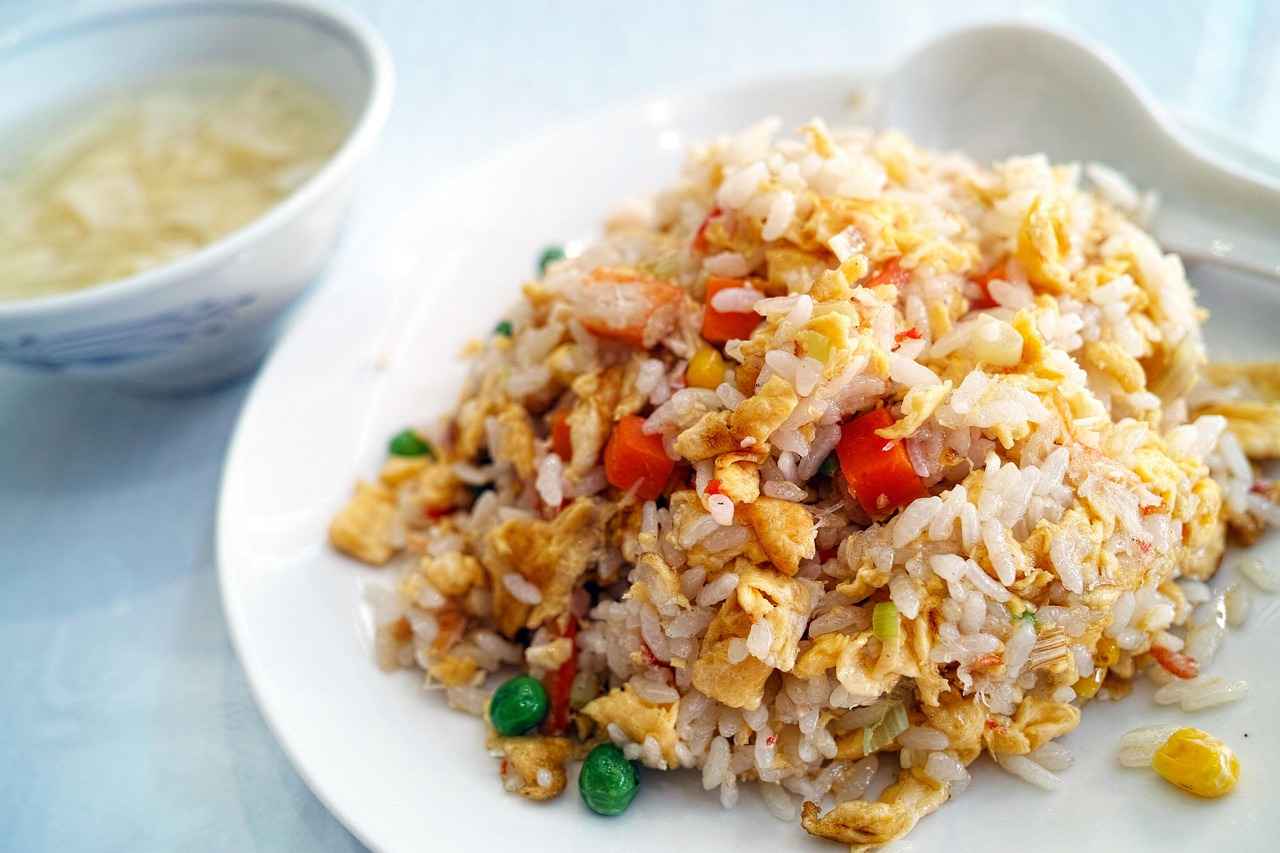
Exploring Traditional Bengali Cuisine
Bengali cuisine is a delightful tapestry of flavors, textures, and aromas, showcasing the rich cultural heritage of West Bengal. Known for its emphasis on fish, rice, and a variety of spices, this cuisine offers an unforgettable experience for food lovers. The significance of food in Bengali culture goes beyond mere sustenance; it is an integral part of celebrations, rituals, and daily life.
Signature Dishes to Savor
- Shorshe Ilish: A quintessential Bengali dish made with hilsa fish cooked in mustard sauce, it is a must-try for anyone visiting the region.
- Chingri Malai Curry: This luxurious prawn curry, cooked with coconut milk and spices, perfectly encapsulates the essence of Bengali flavors.
- Mishti Doi: A sweetened yogurt dessert, it is a staple at celebrations and a favorite among locals.
The Art of Bengali Sweets
Bengali sweets are renowned worldwide and play a significant role in local festivities. Varieties like Rasgulla and Sandesh are not only delicious but also symbolize the region’s culinary artistry. These sweets are often prepared during festivals and family gatherings, reflecting the warmth and hospitality of Bengali culture.
Street Food Delights
The bustling streets of West Bengal are filled with tantalizing street food options. From Puchka (pani puri) to Kathi Rolls, each bite offers a burst of flavor that captures the essence of local life. Exploring these street food stalls is a great way to immerse oneself in the vibrant culture.
Cooking Classes and Culinary Tours
For those looking to delve deeper into Bengali cuisine, participating in cooking classes or culinary tours can be immensely rewarding. These experiences allow visitors to learn from local chefs, gaining insights into traditional cooking techniques and the significance of various ingredients.
In conclusion, Bengali cuisine is a rich and diverse culinary landscape that reflects the culture’s history and traditions. Whether indulging in signature dishes, savoring sweets, or exploring street food, experiencing Bengali cuisine is an essential part of understanding the local culture.
Signature Dishes to Savor
Bengali cuisine is a treasure trove of flavors and traditions, deeply rooted in the culture of West Bengal. Visitors to this vibrant region should not miss the opportunity to indulge in its signature dishes, which showcase the culinary diversity and richness of Bengali food.
One cannot talk about Bengali cuisine without mentioning Shorshe Ilish, a quintessential dish made with hilsa fish cooked in a mustard sauce. The bold flavors of mustard seeds and green chilies create a unique taste that is both aromatic and delicious. Another popular dish is Chingri Malai Curry, which features prawns simmered in a creamy coconut milk gravy, offering a delightful blend of sweetness and spice.
For those who enjoy vegetarian options, Shobji Bhaja, a medley of fried vegetables, is a must-try. This dish is often accompanied by Bhaat (rice) and Dal (lentils), creating a wholesome meal that is both comforting and satisfying. Additionally, Beguni, which consists of batter-fried eggplant slices, is a popular snack that pairs well with tea.
No meal in Bengal is complete without the iconic Bengali sweets. Rasgulla and Sandesh are two of the most beloved desserts, made from fresh chhena (cottage cheese) and often flavored with cardamom or saffron. These sweets are not just a treat; they hold cultural significance and are often served during festivals and celebrations.
Finally, to truly experience the essence of Bengali cuisine, one should explore the bustling street food scene. Delicacies like Puchka (pani puri) and Jhalmuri (spicy puffed rice) are popular among locals and provide a taste of the region’s vibrant culinary culture.
In conclusion, Bengali cuisine is a celebration of flavors that every visitor should explore. From savory fish curries to delectable sweets, the dishes reflect the rich heritage of West Bengal and are sure to leave a lasting impression on anyone who tastes them.
The Art of Bengali Sweets
Bengali sweets are not just desserts; they are a cultural phenomenon that reflects the rich heritage of West Bengal. Renowned for their unique flavors and textures, these sweets have gained international acclaim and are an integral part of Bengali celebrations and daily life.
Some of the most popular varieties include:
- Rasgulla: Soft, spongy balls made from chhena (Indian cottage cheese) soaked in light sugar syrup.
- Sandesh: A delicately flavored sweet made from fresh chhena, often garnished with nuts or flavored with cardamom.
- Mishti Doi: A traditional yogurt dessert that is sweetened with jaggery and flavored with cardamom, served in earthen pots.
- Chamcham: A cylindrical sweet made from chhena, typically flavored with rose water and garnished with coconut.
The significance of these sweets extends beyond mere taste. They play a vital role in celebrations such as weddings, festivals, and religious rituals. For instance, during Durga Puja, the most celebrated festival in West Bengal, it is customary to offer sweets to the goddess and share them among family and friends, symbolizing joy and togetherness.
In daily life, Bengali sweets are often enjoyed with tea or served as a dessert after meals. They embody the essence of Bengali hospitality, where offering sweets to guests is a sign of respect and warmth.
In conclusion, the art of Bengali sweets is a delightful blend of tradition, flavor, and cultural significance. Whether you are celebrating a special occasion or simply indulging in a sweet treat, these confections are sure to bring a taste of Bengal’s rich heritage to your palate.
Street Food Delights
Street food in Bengal is not just a meal; it’s a vibrant experience that reflects the region’s rich culture and traditions. The bustling streets of cities like Kolkata are lined with vendors offering a variety of mouth-watering dishes that cater to every palate. This article delves into some of the most popular street food items and where to find them in local markets.
- Puchka (Panipuri): These crispy hollow puris filled with spicy tamarind water and mashed potatoes are a must-try. You can find them at almost every street corner, especially in areas like College Street.
- Kathi Rolls: Originating from Kolkata, these wraps filled with spiced meats or vegetables are perfect for a quick bite. Head to Park Street for the best Kathi rolls.
- Jhal Muri: This puffed rice snack mixed with spices, mustard oil, and vegetables is a popular evening snack. Look for it in Maidan or Esplanade.
- Chaat: A delightful mix of flavors, Bengali chaat includes items like aloo chaat and dahi puri. You can find numerous stalls in Gariahat Market.
- Shingara: These flaky pastries filled with spiced potatoes are often enjoyed with tea. Visit any local tea stall for a taste.
Each of these dishes not only tantalizes your taste buds but also tells a story of Bengal’s culinary heritage. The vibrant colors, enticing aromas, and bustling atmosphere of the street food scene offer a unique glimpse into the local culture.
For an authentic experience, try visiting local markets like New Market or Khidderpore, where you can engage with vendors and learn about the preparation of these delightful dishes. Don’t miss the chance to savor the flavors of Bengal’s street food, as it is truly a feast for the senses!
Cooking Classes and Culinary Tours
To truly immerse yourself in the vibrant culture of West Bengal, participating in cooking classes or embarking on culinary tours is an enriching experience. These activities not only allow you to learn from local chefs but also provide insights into the traditional cooking methods that have been passed down through generations.
Many culinary schools and local chefs offer classes that cater to all skill levels, from beginners wanting to learn the basics of Bengali cooking to seasoned cooks looking to refine their skills. During these classes, you will have the opportunity to:
- Learn about the essential spices and ingredients that define Bengali cuisine.
- Understand the cultural significance of various dishes, including their historical and social contexts.
- Engage in hands-on cooking experiences, preparing dishes like Shorshe Ilish (hilsa fish in mustard sauce) or Chingri Malai Curry (prawn coconut curry).
- Enjoy the fruits of your labor by tasting the delicious meals you have prepared.
In addition to cooking classes, culinary tours offer a unique way to experience the local food scene. These tours typically include:
- Visits to local markets to discover fresh produce and spices.
- Sampling street food from popular vendors, allowing you to taste authentic flavors.
- Dining experiences at family-run restaurants, where you can savor home-cooked meals.
Whether you are a food enthusiast or simply curious about Bengali cuisine, these culinary experiences provide an authentic glimpse into the heart of West Bengal’s culture. Engaging with local chefs and exploring the rich tapestry of flavors will leave you with lasting memories and a deeper appreciation for this region’s culinary heritage.
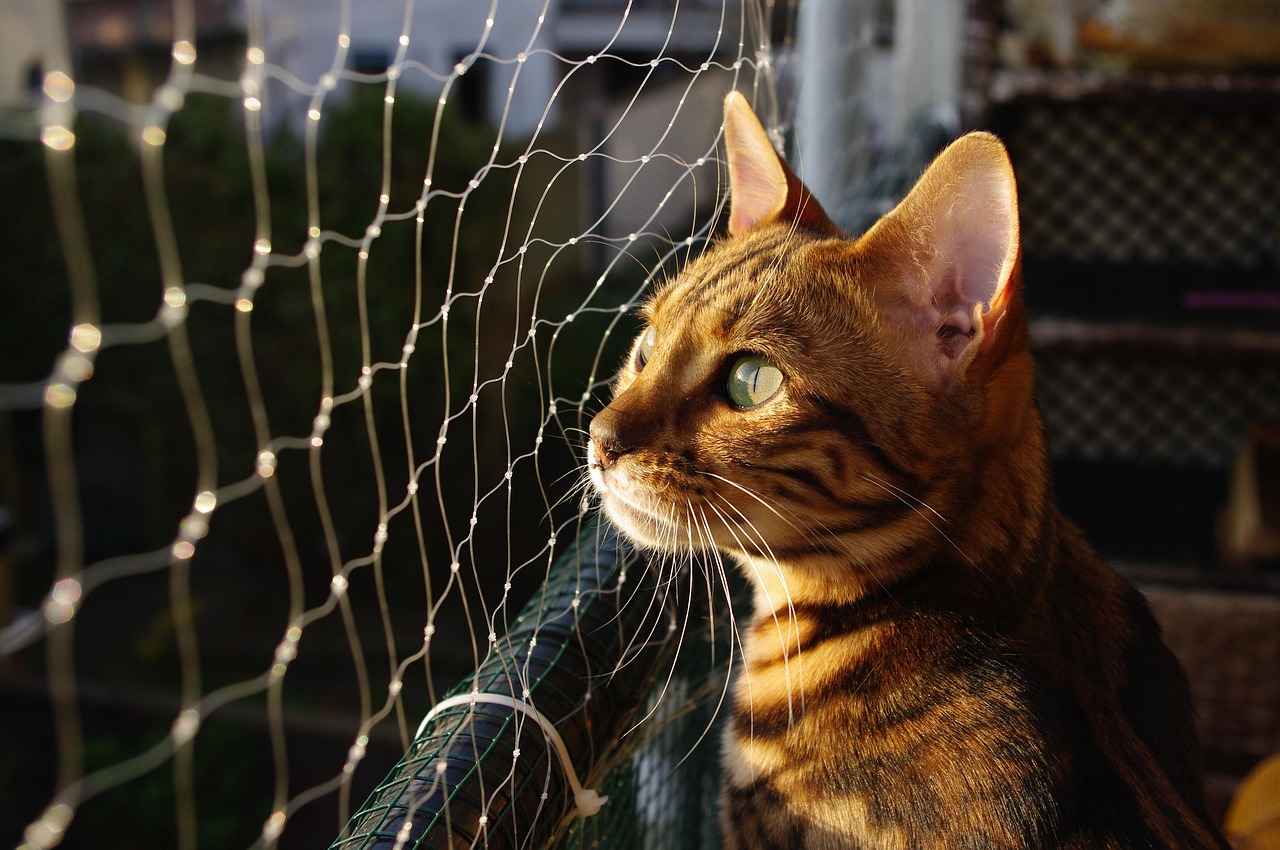
Participating in Local Festivals
Festivals in West Bengal are not just events; they are a vibrant celebration of life, culture, and community. These festivals reflect the region’s rich heritage and provide a unique opportunity for visitors to immerse themselves in local traditions. Here, we will explore some of the major festivals, their significance, and how you can participate like a local.
- Durga Puja: This is the most significant festival in West Bengal, celebrated with immense grandeur. It honors the goddess Durga, symbolizing the victory of good over evil. Streets are adorned with colorful decorations, and elaborate idols of the goddess are installed in beautifully crafted pandals. To participate, join the local festivities, visit the pandals, and enjoy the cultural programs that take place during this time.
- Poila Baisakh: The Bengali New Year is celebrated with much enthusiasm. People wear new clothes, prepare special dishes, and visit friends and family. Engage in the local tradition by participating in community fairs, enjoying traditional sweets, and attending cultural performances that showcase Bengali music and dance.
- Viswakarma Puja: This festival is dedicated to the Hindu god of architecture and engineering. Celebrated mainly by artisans and craftsmen, it involves the worship of tools and machinery. To experience this festival, visit local workshops and witness the unique rituals performed by the craftsmen.
- Jagadhatri Puja: Celebrated primarily in the town of Chandannagar, this festival honors the goddess Jagadhatri. The vibrant processions and cultural events are a sight to behold. Participate by joining the processions and enjoying the local delicacies offered during the celebrations.
Each of these festivals offers a glimpse into the soul of West Bengal, showcasing its rich traditions and communal harmony. By engaging with locals during these celebrations, you will not only gain a deeper understanding of their culture but also create unforgettable memories.
In conclusion, experiencing the festivals of West Bengal is an enriching journey that allows you to connect with the local community and appreciate their vibrant way of life. Embrace these opportunities to celebrate with the locals and immerse yourself in the colorful tapestry of Bengali culture.
Durga Puja: The Grand Celebration
Durga Puja stands as the most celebrated festival in West Bengal, embodying the essence of the region’s rich cultural heritage. This grand celebration, which typically occurs in September or October, honors the goddess Durga’s victory over the buffalo demon Mahishasura, symbolizing the triumph of good over evil. The festival is not just a religious observance but a vibrant cultural extravaganza that draws millions of visitors and locals alike.
The festivities last for several days, with each day dedicated to different rituals and ceremonies. Artistic pandals (temporary structures) are crafted with intricate designs, showcasing creativity and devotion. Each pandal often represents a unique theme, reflecting contemporary social issues or traditional motifs. Visitors can immerse themselves in the atmosphere, admiring the elaborate decorations and the stunning idol of Goddess Durga, adorned with exquisite jewelry and vibrant attire.
During Durga Puja, the streets of West Bengal come alive with music, dance, and cultural performances. Traditional dhak (drum) beats resonate through the air, inviting everyone to join in the celebrations. Local artists perform folk dances, and various cultural programs are organized, allowing participants to experience the rich artistic expressions of Bengali culture.
Food also plays a pivotal role in the festivities. Families prepare special dishes, and the streets are lined with stalls offering a variety of Bengali delicacies. From bhog (offerings to the goddess) to street food, the culinary diversity during this time is a feast for the senses.
For those wishing to partake in this vibrant celebration, engaging with local communities is essential. Visitors are encouraged to participate in rituals, enjoy the festive meals, and experience the warmth of Bengali hospitality. Durga Puja is not just an event; it is a profound cultural experience that fosters a sense of unity and joy among participants.
In conclusion, immersing oneself in the Durga Puja celebrations offers an unparalleled glimpse into the heart of West Bengal’s culture. Whether through artistic appreciation, culinary exploration, or community engagement, this festival provides a rich tapestry of experiences that resonate long after the last day of celebration.
Other Notable Festivals
West Bengal is a land of vibrant celebrations, rich traditions, and diverse cultural expressions. While Durga Puja is undoubtedly the crown jewel of festivals in this region, there are several other notable festivals that showcase the unique heritage and communal spirit of the Bengali people. Each festival offers a glimpse into the local customs, rituals, and the colorful tapestry of life in West Bengal.
- Poila Baisakh: The Bengali New Year, celebrated in mid-April, is a time for fresh beginnings. Families clean and decorate their homes, prepare special dishes, and visit local fairs. It is marked by street processions, music, and dance, creating a festive atmosphere.
- Viswakarma Puja: Celebrated in September, this festival honors Lord Viswakarma, the divine architect. Artisans and workers worship their tools and machines, showcasing their crafts through vibrant decorations and processions. The festival is especially popular among the working class.
- Kali Puja: Occurring on the new moon night in October, Kali Puja is dedicated to Goddess Kali. The festival involves elaborate rituals, offerings, and the lighting of oil lamps. The ambiance is filled with devotion and reverence, as communities come together to celebrate.
- Jagaddhatri Puja: Celebrated primarily in Chandannagar, Jagaddhatri Puja is a grand festival that occurs in October or November. It features beautifully crafted idols of Goddess Jagaddhatri, accompanied by cultural performances, processions, and fireworks, making it a visual spectacle.
- Holi: Known as the festival of colors, Holi is celebrated with great enthusiasm in West Bengal. People gather to play with colors, dance, and enjoy festive foods. The joyous spirit of Holi transcends age and background, uniting everyone in celebration.
Each of these festivals not only reflects the rich cultural heritage of West Bengal but also provides an opportunity for locals and visitors alike to engage in the vibrant community life. Participating in these celebrations allows one to witness the warmth, hospitality, and artistic expressions that define this remarkable region.
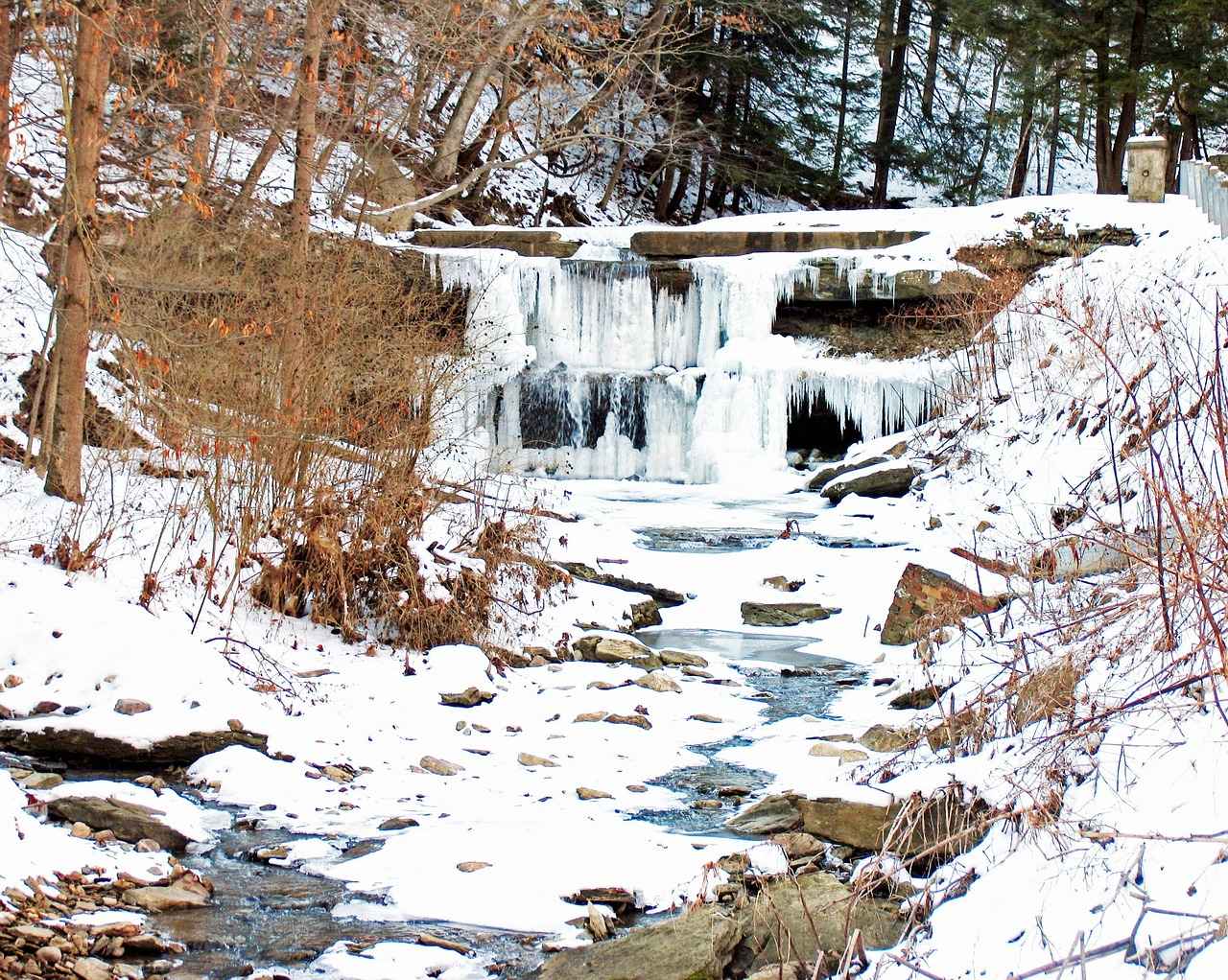
Engaging with Local Arts and Crafts
West Bengal is a treasure trove of artistic traditions, showcasing a vibrant blend of history and cultural expression. This region is renowned for its unique crafts and art forms that reflect the rich heritage of its people. Engaging with these local arts and crafts not only supports artisans but also provides a deeper understanding of the cultural identity of West Bengal.
Traditional Handicrafts
One of the most captivating aspects of West Bengal’s artistic landscape is its traditional handicrafts. The state is famous for various crafts such as:
- Terracotta Art: This ancient craft involves creating intricate designs from clay, often used for decorative purposes.
- Kantha Stitch: A form of embroidery that transforms old saris into beautiful quilts, showcasing vibrant patterns and stories.
- Shantiniketan Weaving: Known for its handloom products, particularly the exquisite Baluchari sarees that tell tales through their designs.
These crafts are not just art forms; they represent the cultural narratives and traditions of the local communities.
Art Galleries and Exhibitions
To appreciate the contemporary and traditional art scene, visiting local art galleries is essential. Notable galleries include:
- Birla Academy of Art and Culture: Showcasing a diverse range of artworks from renowned and emerging artists.
- Academy of Fine Arts: A hub for exhibitions that celebrate various artistic expressions.
These venues often host exhibitions that provide insight into the evolving art landscape of West Bengal.
Where to Find Authentic Pieces
For those looking to bring home a piece of West Bengal’s artistic heritage, local markets and fairs are the best places to explore. Popular spots include:
- New Market: A bustling hub where artisans sell their handcrafted goods.
- Craft Bazar: An annual event that showcases a wide array of local crafts, providing a platform for artisans to connect with buyers.
By purchasing directly from artisans, visitors not only acquire unique pieces but also support the local economy.
Engaging with the arts and crafts of West Bengal is a rewarding experience that enriches one’s understanding of the region’s culture. It fosters connections with local artisans and contributes to the preservation of these cherished traditions.
Traditional Handicrafts
of West Bengal are a testament to the region’s rich cultural heritage and artistic skills. This diverse array of crafts reflects the creativity and traditions of local artisans, making each piece unique and significant.
West Bengal is renowned for its terracotta sculptures, which are crafted using clay and baked to achieve a distinctive finish. These artworks often depict mythological themes and local folklore, showcasing the region’s deep-rooted cultural narratives. The techniques used in terracotta crafting have been passed down through generations, preserving the artistry of this traditional form.
Another prominent craft is weaving, particularly the creation of exquisite Baluchari sarees. These sarees are characterized by their intricate designs and vibrant colors, often depicting scenes from Indian epics. The weaving process is labor-intensive and requires exceptional skill, with artisans spending hours perfecting each piece. This craft not only supports local economies but also keeps traditional methods alive.
Moreover, wooden crafts from West Bengal, such as hand-carved furniture and decorative items, reflect the region’s craftsmanship. Artisans use local wood and traditional techniques to create beautiful and functional pieces that are sought after both locally and internationally.
To truly appreciate these handicrafts, visitors can explore local markets and artisan workshops. Engaging with artisans provides insight into the techniques and stories behind each craft, fostering a deeper connection to West Bengal’s cultural identity.
In conclusion, the traditional handicrafts of West Bengal are not just products; they are a celebration of the region’s history, culture, and artistic expression. By supporting these crafts, one contributes to the preservation of a rich cultural legacy.
Art Galleries and Exhibitions
Exploring the vibrant world of art is a profound way to connect with the cultural heartbeat of West Bengal. The region is home to a plethora of art galleries that showcase both contemporary and traditional art, offering visitors a unique opportunity to appreciate the creativity and talent of local artists.
When you visit local galleries, you not only get to admire stunning artworks but also gain insights into the stories and inspirations behind them. Many galleries host ongoing exhibitions that feature the works of emerging and established artists. This is a chance to witness the evolution of art in West Bengal, reflecting its rich heritage and modern influences.
| Gallery Name | Location | Featured Artists |
|---|---|---|
| Birla Academy of Art and Culture | Kolkata | Various Contemporary Artists |
| Academy of Fine Arts | Kolkata | Local Traditional Artists |
| Gurudev Tagore Gallery | Shantiniketan | Rabindranath Tagore’s Followers |
Many galleries also offer guided tours and workshops, allowing visitors to engage directly with artists and learn about their techniques and inspirations. Participating in these events can deepen your understanding of the local art scene and provide a more immersive experience.
In addition to established galleries, don’t miss out on pop-up exhibitions and local art fairs that showcase the dynamic creativity of the region. These events often highlight the works of young talent and provide a platform for innovative artistic expressions.
By visiting art galleries in West Bengal, you not only appreciate the beauty of art but also support local artists and contribute to the preservation of the region’s cultural legacy. So, make sure to include a visit to these galleries in your itinerary for a truly enriching experience.
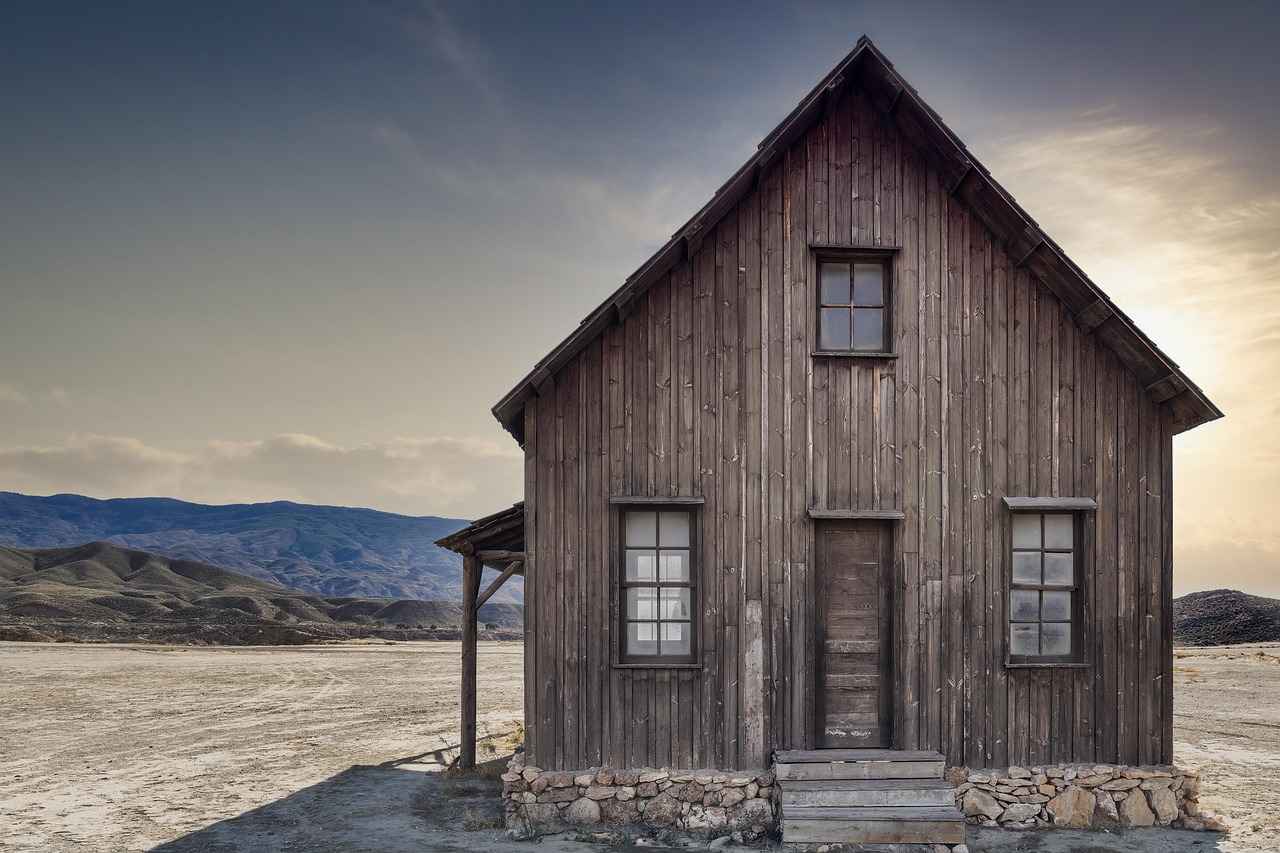
Connecting with the Local Community
Building connections with locals enhances your cultural experience significantly. Engaging with residents not only enriches your understanding of their way of life but also fosters meaningful relationships that can last a lifetime. Here, we offer practical tips on how to interact with the people of West Bengal and immerse yourself in their vibrant culture.
- Participate in Community Events: Attend local festivals, fairs, and cultural gatherings. These events are perfect opportunities to meet locals, share stories, and experience the essence of Bengali culture firsthand.
- Join Workshops: Look for workshops that showcase traditional crafts or cooking classes. Learning from local artisans or chefs allows you to gain insights into their skills while building rapport.
- Engage in Conversations: Don’t hesitate to strike up conversations with locals. Ask about their daily lives, traditions, and recommendations for places to visit. Most residents appreciate genuine interest in their culture.
- Explore Neighborhoods: Take time to walk through local neighborhoods. Observing daily life and interacting with residents in their environment can lead to spontaneous connections and unforgettable experiences.
- Volunteer Your Time: Consider engaging in volunteer work with local organizations. This not only allows you to contribute positively to the community but also helps you meet like-minded individuals and learn about their challenges and triumphs.
By following these tips, you can create lasting memories and deepen your understanding of West Bengal’s rich cultural fabric. Building connections with the local community is a rewarding aspect of travel that enhances your overall experience and leaves a positive impact on both you and the residents.
Community Events and Workshops
Engaging in community events and workshops is an enriching way to connect with the vibrant culture of West Bengal. These activities not only offer a glimpse into the local lifestyle but also provide opportunities for meaningful interactions with residents.
Participating in these events allows you to immerse yourself in the traditions and customs that shape the community. From local fairs to art exhibitions, there are numerous avenues to explore. Here are some key benefits and opportunities:
- Learn New Skills: Workshops often focus on traditional crafts, cooking, or music, enabling you to acquire new skills while appreciating local artistry.
- Meet Local Residents: These gatherings are excellent platforms for meeting locals who are eager to share their stories and experiences.
- Support Local Artisans: By participating, you contribute to the local economy, helping artisans and small businesses thrive.
- Experience Cultural Diversity: Community events often celebrate various aspects of Bengali culture, from folk dances to culinary festivals, showcasing the region’s rich heritage.
To find these events, consider visiting local community centers, social media groups, or tourism websites that list upcoming activities. Engaging with locals through these platforms can lead to discovering hidden gems and unique experiences.
In conclusion, community events and workshops are not just activities; they are gateways to understanding the heart of West Bengal. By participating, you not only learn but also create lasting memories and friendships, making your visit truly special.
Volunteering Opportunities
Engaging in volunteering is an enriching way to connect with the local culture of West Bengal while making a positive impact on the community. By offering your time and skills, you can immerse yourself in the vibrant traditions and daily lives of the residents.
There are numerous organizations and initiatives throughout West Bengal that welcome volunteers. These opportunities not only allow you to give back but also to learn about the local customs, language, and social dynamics. Here are some avenues to explore:
- Non-Profit Organizations: Many NGOs focus on education, health, and environmental sustainability. Volunteering with these organizations can provide valuable insights into the challenges faced by local communities.
- Cultural Exchange Programs: These programs often pair volunteers with local families, offering a unique opportunity to experience daily life in West Bengal while sharing your own culture.
- Community Development Projects: Participate in initiatives aimed at improving infrastructure, sanitation, or community resources. This hands-on experience allows you to see the direct impact of your contributions.
- Art and Craft Workshops: Engage with local artisans and learn traditional crafts. This not only supports local artists but also helps preserve cultural heritage.
Before committing, it’s essential to research and choose a program that aligns with your interests and values. Reach out to previous volunteers for insights and ensure the organization is reputable and transparent about its operations.
In conclusion, volunteering in West Bengal offers a profound way to connect with the region’s rich culture while positively impacting the community. Whether through education, arts, or community development, your contributions can foster lasting relationships and unforgettable experiences.
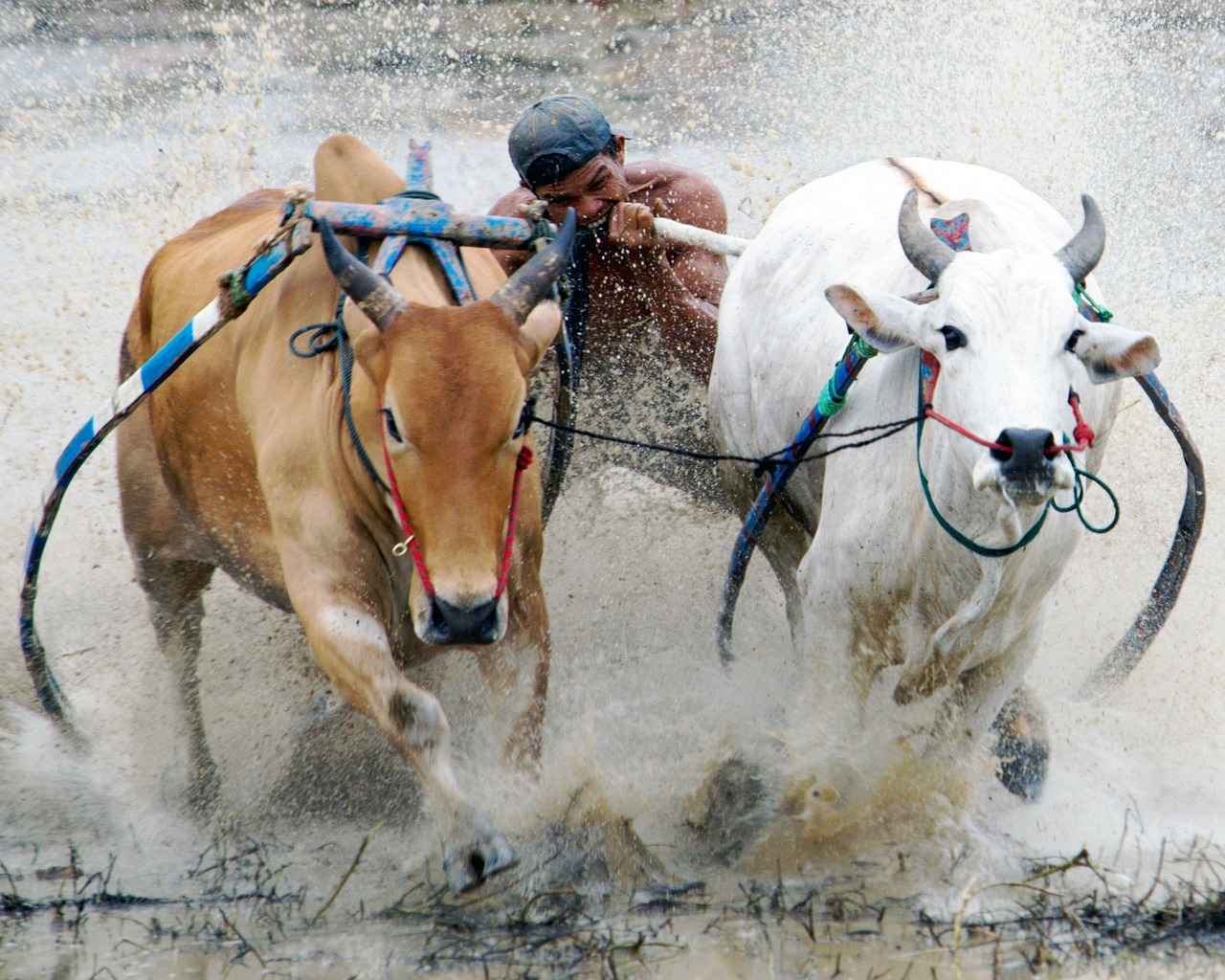
Conclusion: Embracing the Essence of West Bengal
Experiencing West Bengal like a local is a journey that transcends mere sightseeing; it is about immersing oneself in the rich tapestry of culture, cuisine, and community. From the vibrant streets of Kolkata to the serene landscapes of the Sundarbans, every corner of West Bengal offers a unique glimpse into its cultural heritage.
To truly embrace the essence of this remarkable state, one must delve into its traditions. Participate in local festivals such as Durga Puja, where the air is filled with the sounds of dhak (drums) and the aroma of festive foods. Engage with locals during these celebrations, as they share stories that encapsulate the spirit of their community.
Another vital aspect of experiencing West Bengal is through its cuisine. Savor the delicate flavors of traditional dishes like shorshe ilish (hilsa fish in mustard sauce) and indulge in the sweetness of rasgulla and sandesh. Join a cooking class to learn the art of Bengali cooking, allowing you to bring a piece of West Bengal back home.
Moreover, exploring the local arts and crafts is essential. Visit artisan villages to witness the creation of exquisite handicrafts, from kantha embroidery to terracotta sculptures. Purchasing these items not only supports local artists but also provides a tangible connection to the culture.
Finally, building relationships with the local community is crucial. Attend community events, engage in conversations, and consider volunteering to give back. These interactions will enrich your experience, offering insights that guidebooks cannot provide.
In conclusion, to embrace the essence of West Bengal, one must approach it with an open heart and a curious mind. By immersing yourself in its culture, savoring its cuisine, and connecting with its people, you will create lasting memories and a profound appreciation for this enchanting region.
Frequently Asked Questions
- What are the must-try dishes in Bengali cuisine?
Bengali cuisine is a feast for the senses! You simply can’t miss iconic dishes like Shorshe Ilish (hilsa fish in mustard sauce), Chingri Malai Curry (prawn curry with coconut milk), and the irresistible Rasgulla for dessert. Each dish tells a story of tradition and flavor that reflects the rich culture of West Bengal.
- How can I participate in local festivals?
Joining in the local festivals is like stepping into a vibrant painting! The most famous is Durga Puja, where you can witness stunning decorations, cultural performances, and community feasts. Just ask locals about the celebrations, and they’ll gladly welcome you to partake in the festivities!
- Are there cooking classes available for tourists?
Absolutely! Many local chefs offer cooking classes where you can learn to make traditional Bengali dishes. It’s a fun way to dive into the culinary culture while making new friends. Just check out local culinary tours that include hands-on experiences!
- What types of local crafts can I find in West Bengal?
West Bengal is a treasure trove of handicrafts! From exquisite terracotta pottery to stunning kantha embroidery, you’ll find unique pieces that showcase the region’s artistic heritage. Visit local markets or artisan workshops to see these crafts in action!
- How can I connect with the local community?
Connecting with locals can enhance your experience immensely! Attend community events, workshops, or even consider volunteering. It’s a fantastic way to engage with the culture and meet wonderful people who can share their stories and traditions with you.
























































